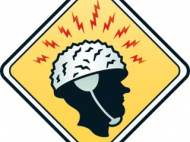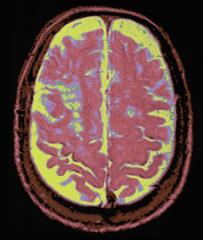Mind “reading” – What do you have to hide?
 Having the ability to read someone’s mind with a “thought machine” has been developed more intensively during the last decade. Scientists showed that they could guess a person’s memory simply by looking at the electrical activity of the brain. They have found that spatial memories can be “read” by a brain scanner so that it is possible to predict automatically where someone imagines themselves to be (the exact location in a maze, for instance) without actually asking them. More recent research allows scientists to “see” the videos you were looking.
Having the ability to read someone’s mind with a “thought machine” has been developed more intensively during the last decade. Scientists showed that they could guess a person’s memory simply by looking at the electrical activity of the brain. They have found that spatial memories can be “read” by a brain scanner so that it is possible to predict automatically where someone imagines themselves to be (the exact location in a maze, for instance) without actually asking them. More recent research allows scientists to “see” the videos you were looking.
“It’s also a small step toward the idea of mind reading, because just by looking at neural activity, we are able to say what someone is thinking,” said Dr Demis Hassabis of University College London. “It’s at least 10 years, probably more, from getting anywhere near that kind of technology, where you could literally read someone’s thoughts in a single short session when they don’t want you to We might be about 10 years away from doing that, so it might be useful to start having those ethical discussions in the near future in preparation for that – but we’re still a long way from doing anything practical.”
The study was led by UCL’s Professor Eleanor Maguire who had already shown that a small area of the brain behind a region called the hippocampus is enlarged in male taxi drivers who had done “The Knowledge” – memorizing the maze of London streets. Professor Maguire trained a different set of male volunteers to navigate themselves through a virtual maze on a computer while their brains were being scanned by a functional MRI machine.
The scientists found that certain nerve cells in the brain’s hippocampus, called “place cells”, became stimulated in definite patterns of activity that the researchers could analyze to guess where in the maze each man imagined himself to be.
“Remarkably, using this technique we found that we could accurately predict the position of an individual within this virtual environment solely from the pattern of activity within their hippocampus,” she said.
The study, published in the journal Current Biology and funded by the Wellcome Trust, the world’s biggest medical research charity, could help scientists to understand the fundamental memory problems behind some neurological diseases. “Understanding how we as humans record our memories is critical to helping us learn how information is processed in the hippocampus and how our memories are eroded by diseases such as Alzheimer’s,” Dr Hassabis said.
Dr. Jack Gallant of the UCB psychology department seems to have gone this research a bit further. In a recent experiment, Dr. Gallant claims to he was able to reproduce video images from human brain activity. Although this research has not yet been peer reviewed, Dr. Gallant and his colleague Shinji Nishimoto have used fMRI to scan the brains of two patients as they watched videos.
A computer program was used to search for links between the configuration of shapes, colors and movements in the videos, and patterns of activity in the patient’s visual cortex. It was later fed more than 200 days’ worth of video clips and asked to predict which areas of the brain the clips would stimulate if people were watching them.
Finally, the software was used to monitor the two patients brains as they watched a new film and to reproduce what they were seeing based on their neural activity alone. The computer program was able to display continuous footage of the films they were watching, although with the images were blurred. For example, in one scene which featured Steve Martin wearing a white shirt, the software recreated his shape and torso but missed other details, like his facial features.
“Some scenes and objects decode better than others,” said Gallant. “We can decode talking heads really well. But a camera panning quickly across a scene confuses the algorithm.
As the technology and our understanding of brain functions and signal patterns improve, one day it may be possible to do the same with other types of memories and thoughts, although the possibility of using a mind-reading machine to solve crimes or to fight terrorism is still a distant prospect since the current precision varies from 70 to 90 percent.










Leave your response!